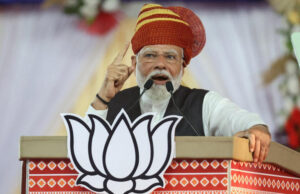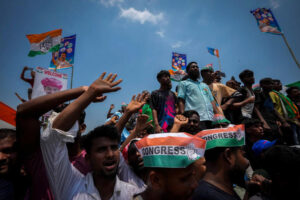MAY 6, 2024

The world’s biggest election will decide who runs one of its hottest economies, but messages aimed at the masses are usually different from what investors want to hear.
In India’s case, though, allowing more of the bounty to trickle down to its poor would be in both groups’ best interests. Hot topics include inheritance taxes and wealth redistribution, with both ruling and opposition parties portraying themselves as champions of the common man. The slugfest has drawn much needed attention to rising income inequality amid fast-paced economic growth in the country.
India’s determination to emulate China’s playbook and repeat the historic economic boom that rode on manufacturing expansion and productively employing a massive youth population rests on making sure the gains aren’t limited to a small segment of the population. According to recent findings by the World Inequality Lab, the income share of the top 1% stood at 22.6% in 2022, among the highest in the world, and much larger than China’s 15.7%. The top 10%’s share in India was 57.7% versus 43.4% in China.
If India fails to counter the rising inequality by creating gainful employment, most Indians probably won’t see their income rise substantially despite impressive gross domestic product growth numbers, and they may continue to depend on government assistance. Higher fiscal deficits from supporting this population, higher interest rates to combat resulting inflation and weak consumption growth threaten to limit India’s growth going forward.
A closer look at the numbers shows some troubling consumption trends. The pattern of growth has been skewed for the past several quarters, with strong investment demand offsetting weak consumption demand. For instance, India’s GDP growth rose sharply to 8.4% in the last quarter of 2023, well above expectations, primarily supported by strong public capital investment growth. But private consumption growth remained lackluster, inching up to 3.5%. Household consumption accounts for about 60% of India’s GDP.
The dichotomy of weak consumption demand for staples and discretionary items and strong investment demand, especially for premium real estate, reflects the continued challenges of low-income households hit by high inflation. Shares of India’s leading consumer brand Hindustan Unilever have fallen nearly 17%, and shares of Britannia Industries are down 11% since the beginning of the year.

One of the reasons for rising inequality, according to World Inequality Lab, is India’s failure to pull more of its workforce away from agriculture toward more productive and better-paying employment. India is attempting to reconfigure its economy away from farming toward manufacturing but has faced difficulties, including political opposition to much-needed agriculture and labor reforms.
The Indian government’s Annual Periodic Labour Force Survey for fiscal 2022 shows that 45.5% of the workforce was employed in agriculture, 12.4% in construction, and only 11.6% in manufacturing, with the rest in services. Other reasons for the imbalance are educational inequality and the unequal effects of India’s services-led economic growth.
The inequality worsened during the pandemic when swaths of India’s informal economy faced a greater loss of livelihood than the corporate sector. India’s policy responses—choosing to remain fiscally tight except for the free food program—ended up helping the formal economy and capital markets more. Lower interest rates boosted the formal sector but reduced returns on bank savings for the masses. The pandemic also reversed India’s transition to nonfarm employment, according to the International Labor Organization, even as agriculture remains one of the poorest-performing sectors of the economy.
China’s incredible growth story involved the transformation of rural people into more productive workers in its booming cities. Investors banking on India catching up with its giant neighbor will be disappointed if the country can’t use its human capital.
Courtesy: WSJ










































































































